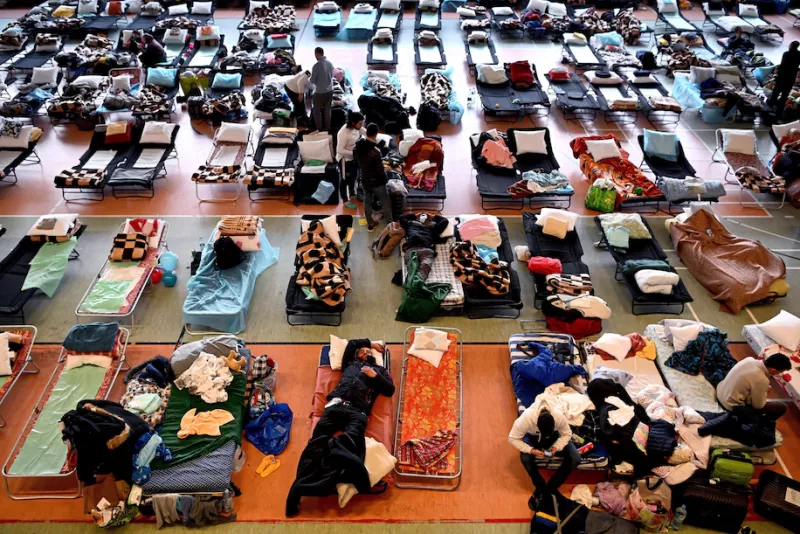
We have seen a more rapid transformation of Europe’s geopolitical landscape during the past week than at any time since the fall of the Berlin Wall and the Soviet Union.
Following Russia’s invasion of Ukraine, European nations — and the United States — have restricted Russian access to the SWIFT banking system, Germany has substantially increased its defense budget, and the European Parliament has said it will weigh Ukraine’s petition to join the European Union. Even more dramatic, Germany announced that it would provide 1,000 antitank weapons to Ukraine, Sweden plans to send 5,000 antitank weapons, and Finland and others plan to send weapons as well.
The European Union itself, on top of issuing heavy sanctions, banned Russian flights from its airspace and opted to help finance Ukrainian defense efforts. None of this was even remotely possible a week ago.
Partly, this was a result of Vladimir Putin acting far more aggressively and dangerously than many had expected. But decisive political leadership in Brussels and key European capitals also played a part. We have seen the previously unthinkable rapidly become the politically necessary throughout Europe. These are historic days.
Unfortunately, there are few signs that Kremlin leaders have set any limitations on what they are prepared to do to realize their aims. They talk about “demilitarization and denazification,” which is their way of demanding total security and political control of Ukraine, and they are likely to escalate militarily as long as they perceive that these aims are still achievable.
In all probability, Russia’s calculations haven’t taken the possibility of failure into account. The risk is that pure desperation would accompany any acceptance in the Kremlin of the possibility of defeat. And although Europe has not declared war on Russia, nor does it intend to, that does not mean that a besieged Kremlin sees it this way.
The prospects for a political solution look bleak at the moment, and there is a real possibility of a drawn-out war between Western-supplied and -supported Ukrainian forces and the large Russian army. And this war might not be restricted to within Ukraine’s borders.
If reports of an attack on the Russian air base at Millerovo on Feb. 25 are true, at least some Ukrainian forces have demonstrated that they might be ready to take the fight to Russia itself. It’s difficult to blame them.
Meanwhile, Kremlin leaders might not be prepared to simply accept European countries’ providing support and supplies to Ukraine. Cyberattacks might be just the beginning, operations by Russian special security organizations that fall in a conflict gray zone could well follow, and direct kinetic Russian action remains a possibility as the confrontation escalates.
Poland, which is now the focus of U.S. military reinforcements, is in an exposed position. But even non-NATO countries such as Sweden and Finland will be seen in the Kremlin as part of the war. European leaders have to be prepared to further strengthen their ties to meet a threat that will be directed at Europe as well.
Some observers are talking about the prospect of a new deep Cold War with Russia. That’s a much too optimistic view.
We are instead likely to be engaged in a confrontation only marginally short of hot war with the Kremlin and its forces as long as Putin remains in power. Europe has changed as a result of Putin’s aggression, and a long confrontation, which could well be more hot than cold, lies ahead.
The implications of the new situation are fundamental. The European Union will have to continue to follow through. Coordination across the Atlantic has been strong in the efforts to prevent this war — it will have to be even stronger as the war continues for weeks, months and maybe years.
If Putin succeeds, he is likely to seek revenge against all those who have tried to block him, and Europeans everywhere will be in danger. If he fails, he might well fall, and so might the entire regime he has built up.
Either way, the future of Europe and the E.U. looks much different today than it did just a week ago.
We might not have true peace in Europe until Putin leaves the Kremlin. But then we should start anew our efforts to build a Europe whole and free. It’s too early to think in these terms, but a NATO that perhaps also has Sweden and Finland as members should be ready to invite both Ukraine and Russia to join.
But before we get there, much will happen, little of which we can foresee today.
Carl Bildt is a former prime minister of Sweden and a contributing columnist for The Post.
